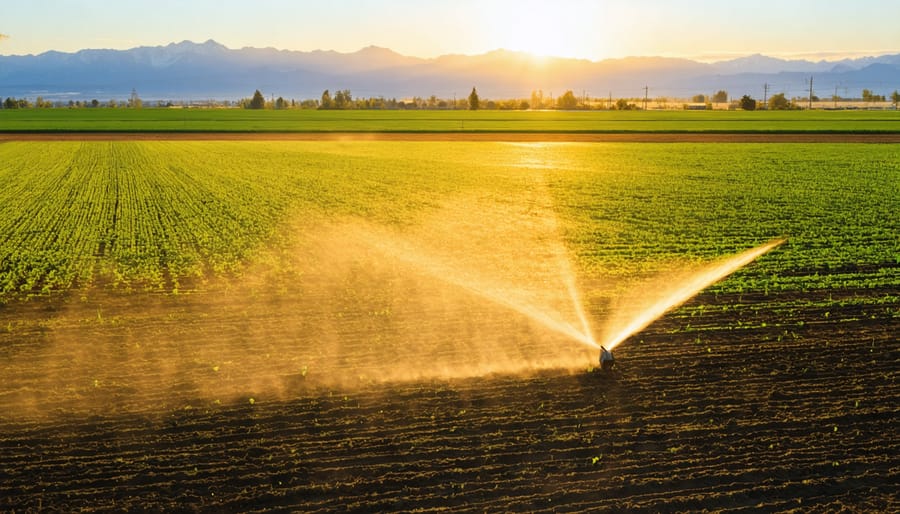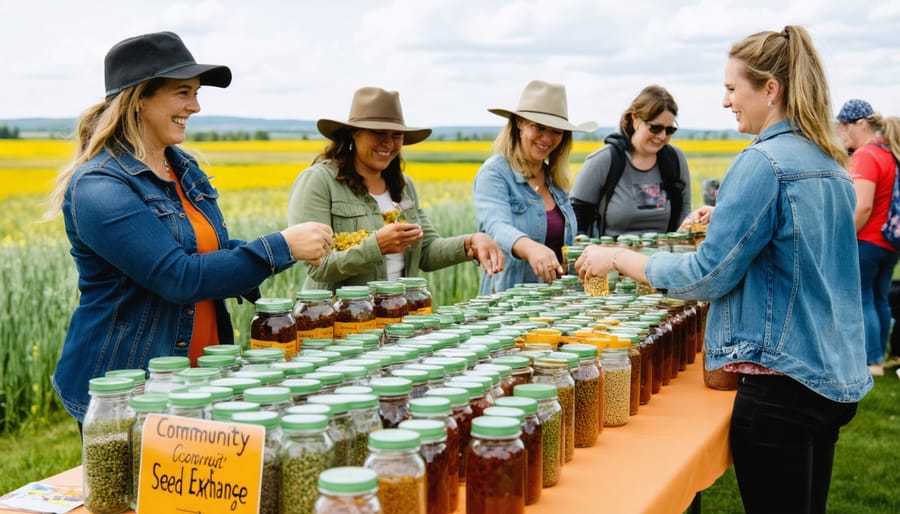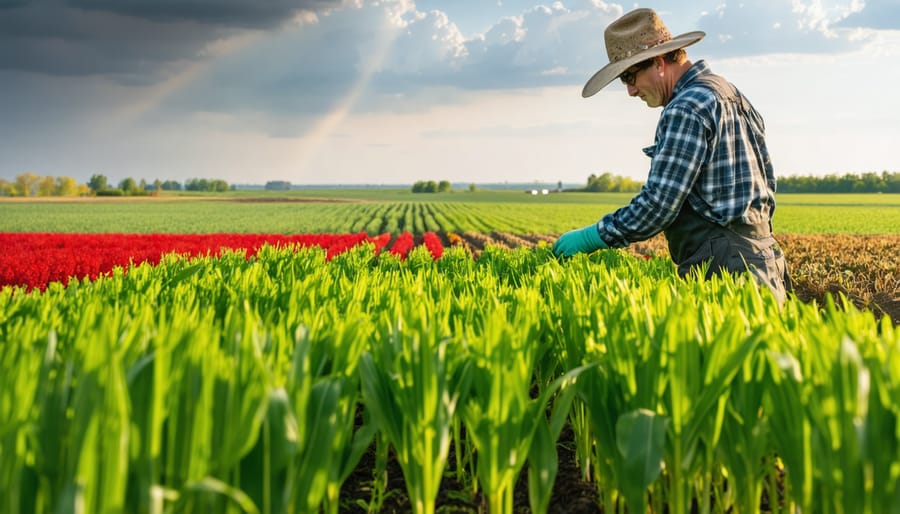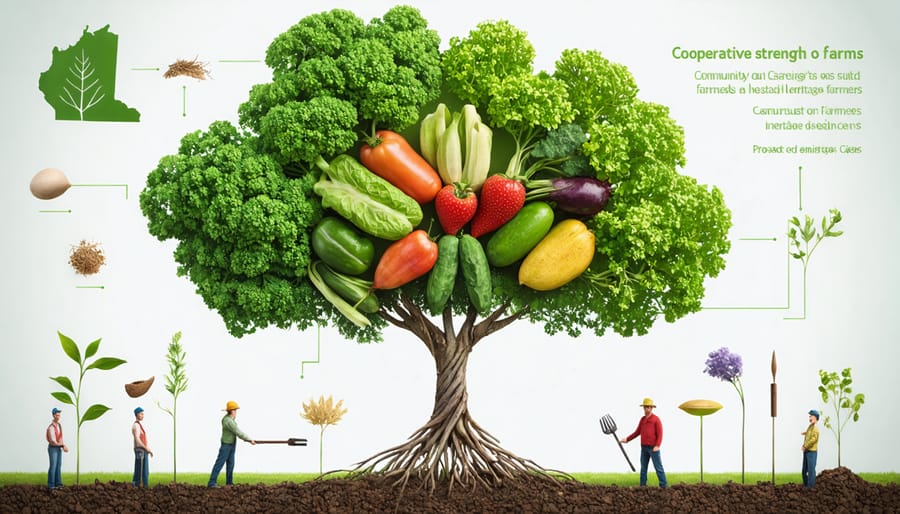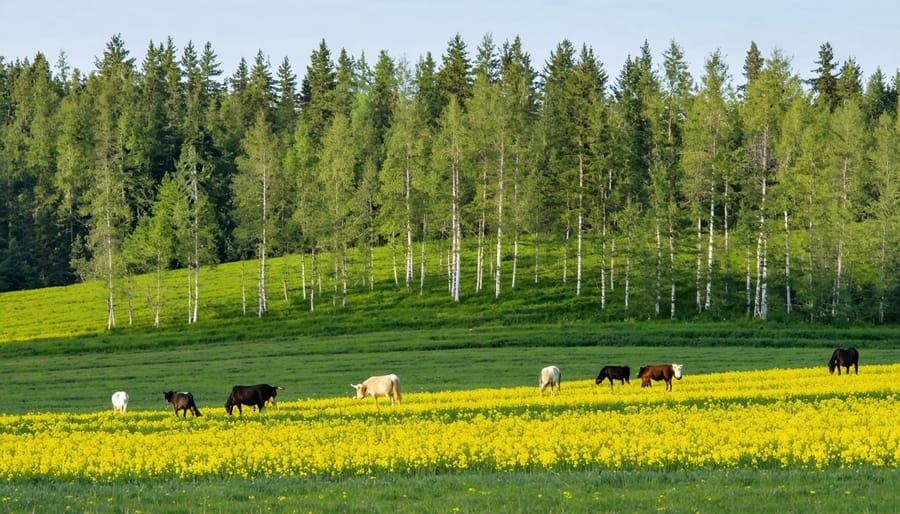Transform conventional grain fields into thriving organic operations through systematic soil building, strategic crop rotation, and precise weed management. The growing demand for organic grains in Canada, coupled with premium market prices, presents a compelling opportunity for farmers considering an organic transition in Alberta and beyond. Recent data shows organic grain farmers achieving 50-150% price premiums over conventional markets, while building resilient soil systems that withstand climate variability.
Successful organic grain production hinges on three foundational elements: robust crop rotation planning that includes nitrogen-fixing legumes, mechanical weed control integration before critical crop stages, and development of strong relationships with organic grain buyers before transition begins. Prairie farmers who implement these core strategies report reduced input costs of 30-40% within their first three years of organic production, while maintaining competitive yields through improved soil biology and strategic cultural practices.
This field-tested approach, validated by decades of Canadian organic farming experience, offers a clear pathway to sustainable profitability while meeting growing consumer demand for organic grains.

The Alberta Advantage in Organic Grain Production
Key Crops Thriving in Alberta’s Organic Fields
Several grain varieties have proven particularly successful in Alberta’s organic farming landscape. Hard red spring wheat remains a cornerstone crop, with varieties like AAC Brandon and AAC Viewfield showing excellent disease resistance and competitive yields under organic management. These varieties typically yield 2.5-3 tonnes per hectare when proper rotation and soil management practices are implemented.
Ancient grains have found their niche in organic production, with spelt and kamut becoming increasingly popular due to their natural resilience and premium market value. Oats, particularly milling varieties such as CS Camden and AC Morgan, perform exceptionally well in organic systems, benefiting from their natural ability to compete with weeds.
Pulse crops play a vital role in organic rotations, with yellow peas and faba beans emerging as top performers. These nitrogen-fixing crops not only contribute to soil health but also provide valuable market opportunities, with organic yellow peas consistently fetching premium prices in both domestic and export markets.
Rye and barley round out the successful crop roster, with fall rye becoming particularly attractive for its weed-suppressive properties and reliable performance in organic systems. Many Alberta organic farmers report success with CDC Copeland barley, especially in regions with shorter growing seasons.
Soil Management Success Stories
Meet Tom Anderson, a third-generation farmer from Lacombe County, who transformed his 800-hectare operation through sustainable soil management practices. By implementing cover cropping and diverse rotation cycles, Tom increased his soil organic matter by 2% over five years while maintaining consistent yields.
Sarah Mitchell from Camrose shares another success story. After introducing green manure crops and reducing tillage, her farm saw a 30% increase in water retention and significantly improved soil structure. “The earthworm population explosion was our first indicator that we were on the right track,” Sarah notes.
In Rocky View County, the Jensen family’s innovative approach to composting and micronutrient management has led to remarkable results. Their systematic soil testing program revealed a 40% increase in beneficial microorganisms, translating to better nutrient cycling and crop resilience during drought periods.
These farmers demonstrate that patience and commitment to soil health pays off. Their success has inspired a growing network of Alberta organic grain producers who regularly share knowledge and techniques through field days and mentorship programs.
Practical Steps to Transition to Organic Grain

Certification Requirements and Timeline
In Canada, transitioning to organic grain farming requires a rigorous certification process overseen by organic certification bodies accredited by the Canadian Food Inspection Agency (CFIA). The journey typically begins with a 36-month transition period during which farmers must follow organic practices while maintaining detailed records of all farming activities.
The certification timeline starts with submitting an application to a certified body, followed by developing an organic system plan that outlines your intended practices, crop rotation strategies, and input materials. During the transition period, your land must be free from prohibited substances, including synthetic fertilizers and pesticides.
Annual inspections are mandatory and include thorough reviews of your record-keeping systems, production methods, and storage facilities. Expect to maintain detailed documentation of seed sources, field histories, buffer zones, and pest management strategies. Your first inspection should be scheduled within the first 15 months of beginning the transition.
The certification cost varies by operation size but typically ranges from $1,000 to $3,000 annually. Many provinces, including Alberta, offer transition programs to help offset these costs. Once certified, you’ll need to renew your certification yearly and maintain compliance with the Canadian Organic Standards to retain your organic status.
First-Year Field Management Tips
The first year of organic grain production requires careful planning and diligent field management. Start by selecting fields with minimal weed pressure and good soil health. Early spring soil testing is essential to understand your baseline nutrient levels and plan amendments accordingly.
Timing is crucial for successful establishment. In Alberta’s climate, begin field preparation as soon as soil conditions permit. Consider implementing a stale seedbed technique by doing initial tillage 2-3 weeks before planting, allowing weed seeds to germinate, then eliminating them with shallow cultivation just before seeding.
Increase seeding rates by 10-15% compared to conventional rates to improve crop competition against weeds. Plant when soil temperatures reach at least 5°C to ensure vigorous emergence. Maintain proper seeding depth – usually 2.5 to 5 cm depending on your grain variety and soil conditions.
Monitor fields regularly for weed pressure and pest issues. Be prepared to implement mechanical weed control methods like harrowing or inter-row cultivation when weeds are at their vulnerable white-thread stage. Keep detailed records of all operations, weather conditions, and crop development.
Building soil fertility naturally takes time. Consider undersowing with clover or applying approved organic amendments in the fall to support long-term soil health. Connect with experienced organic farmers in your area through local organic associations for region-specific advice and mentorship opportunities.
Remember that the transition period is an investment in your soil’s future productivity. Focus on establishing strong foundational practices rather than maximum yields during this crucial first year.
Economic Viability and Market Access
Current Market Prices and Trends
The organic grain market continues to show robust growth in Canada, with prices consistently outperforming conventional grain markets. Current market data shows organic wheat commanding premiums of 150-200% above conventional prices, averaging $18-22 per bushel. Similar trends are observed for organic oats ($7-9/bushel) and organic barley ($9-12/bushel).
Alberta farmers implementing profitable organic farming strategies are capitalizing on strong domestic and international demand, particularly from the United States and European Union. The growing plant-based food sector has created additional market opportunities, with organic pulse crops like lentils and peas seeing increased demand.
Market analysts project continued growth in the organic sector, with annual increases of 5-8% expected over the next five years. However, prices can fluctuate seasonally, making strong relationships with buyers and diversified marketing strategies essential. Direct-to-processor contracts are becoming more common, offering price stability and premium opportunities for farmers who can meet specific quality standards.
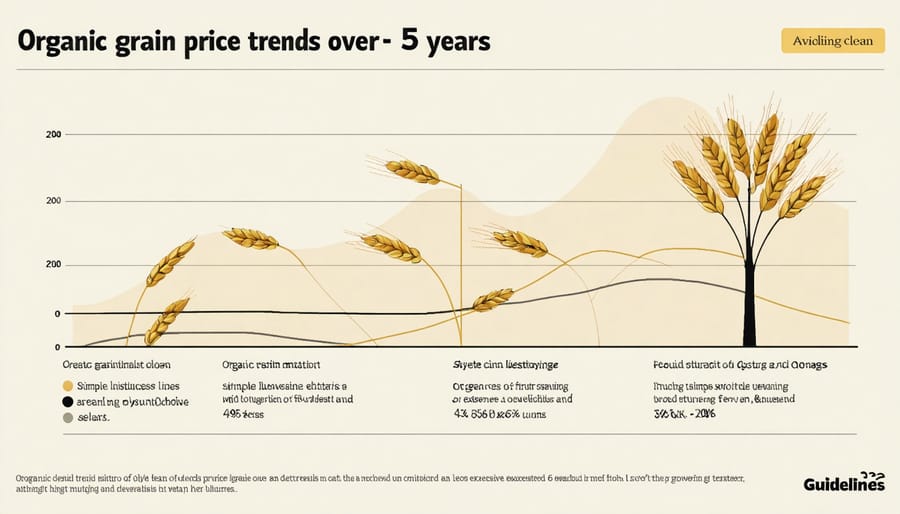
Building Buyer Relationships
Building strong relationships with organic grain buyers is crucial for long-term success in the Alberta market. Start by researching and connecting with established organic grain buyers, processors, and food manufacturers in Western Canada. Consider joining the Organic Alberta network, which regularly hosts meet-and-greet events where farmers can connect directly with potential buyers.
Developing multiple market channels provides stability and better price negotiations. Consider establishing relationships with local feed mills, organic livestock producers, and specialty food manufacturers. Many successful organic grain farmers in Alberta maintain contracts with 3-4 different buyers to minimize risk and maximize opportunities.
Documentation and transparency are key to buyer trust. Keep detailed records of your organic certification, crop rotation plans, and quality testing results. Consider investing in on-farm storage to maintain crop quality and flexibility in timing your sales.
Regular communication with buyers about your projected yields and crop quality helps build lasting partnerships. Share your sustainable farming practices and commitment to organic principles – many buyers value these stories for their marketing efforts. Remember, reliability and consistency in both product quality and business dealings are essential for maintaining strong buyer relationships.
Support Networks and Resources
Government Programs and Grants
Several government programs support Canadian organic grain farmers through their transition and ongoing operations. The Canadian Agricultural Partnership (CAP) offers cost-sharing opportunities for certification, equipment upgrades, and soil health improvements. In Alberta, the Organic Agriculture Product Development Program provides up to $50,000 in matching funds for transitioning farmers.
Federal programs like AgriStability and AgriInvest help manage income risks, while the Advanced Payments Program offers interest-free cash advances up to $100,000. Environmental Farm Plans can unlock additional funding for sustainable practices, particularly beneficial for organic operations.
The Prairie Organic Development Fund supports research and market development initiatives. First-time organic farmers can access mentorship programs through provincial organic associations, often partially funded by government grants. These programs typically have specific application windows and requirements, so connecting with local agricultural offices is recommended for current opportunities and application assistance.
Mentorship Opportunities
Connecting with experienced organic grain farmers is a vital step in your transition journey. The Organic Alberta Mentorship Program pairs new farmers with seasoned organic producers who provide guidance through their first three years of transition. These mentors share practical insights on certification requirements, soil management, and crop rotation strategies specific to Alberta’s growing conditions.
The Canadian Organic Growers (COG) also offers a structured mentorship program across the country, facilitating both in-person and virtual connections. Their database includes over 100 experienced organic grain farmers willing to share their expertise.
Local organic farming associations regularly host field days and farm tours, providing opportunities to network with successful organic grain producers. The Prairie Organic Grain Initiative coordinates regional study groups where farmers can discuss challenges and solutions with peers who understand the unique demands of organic production in the Canadian prairies.
Contact your regional organic farming association to explore these mentorship opportunities and begin building your support network.
Transitioning to organic grain farming represents a significant but rewarding journey for Canadian farmers. Throughout this guide, we’ve explored the essential elements of successful organic grain production, from soil health management and crop rotation strategies to certification requirements and market opportunities in Alberta and beyond.
Remember that success in organic farming isn’t achieved overnight. Start by developing a detailed transition plan, connecting with experienced organic farmers in your region, and working closely with certification bodies. Consider joining local organic farming associations, which can provide invaluable support and networking opportunities.
The growing demand for organic grains in both domestic and international markets presents exciting opportunities for Canadian farmers. While challenges exist, the combination of premium prices, environmental benefits, and long-term soil sustainability makes organic grain farming a viable option for those committed to the journey.
Take the first step by conducting a thorough assessment of your land, reaching out to organic certifiers, and attending workshops or field days. With proper planning, dedication, and support from the organic farming community, you can successfully navigate the transition to organic grain production.


